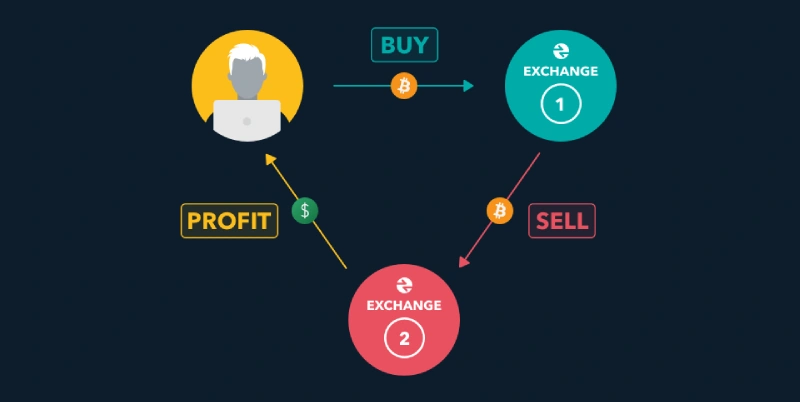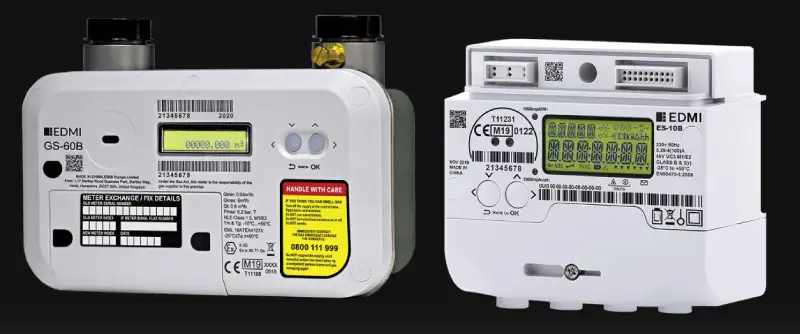Electricity Arbitrage | Turning a profit from your solar panels and battery
In response to climate change, many household and business owners have recently installed their own power generation units, be it solar panels, wind turbines, etc., and have, as a side-effect, enjoyed protection from the energy crisis of 2022.
This is great, but we believe there is still a lot of untapped potential for savings, profit and carbon reduction by optimising your own power generation, storage and management system.
In fact, by combining careful power management, selling electricity to the grid, and providing load services to the grid, we speculate it is possible to turn a profit. The good old “buy low, sell high” adage applied to your electricity setup.
In this guide, we introduce you to the little-known concept of electricity arbitrage and introduce a theoretically viable arbitrage strategy.
Contents
- What is “arbitrage”?
- What is electricity arbitrage?
- The hypothetical electricity arbitrage strategy
- Tips from real-life applications
- Conclusion
- External Resources
What is “arbitrage”?
If you want to skip this background section, skip directly to the guide here.

Arbitrage is a word you may only hear if you speak with someone working on Wall Street or the City. It is commonly used by traders, investment bankers and asset managers in reference to profiteering from the price difference of the same asset or commodity across two markets.
For example, you may find the same Coca-Cola can cheaper in the supermarket than at the workplace vending machine. If you decided to purchase cans from the supermarket and sell them on to your work colleagues cheaper than the vending machine, you would be doing arbitrage (do not try this out; you may get fired…).
In any case, in free market economies, this practice organically equilibrates price differences that should not be there. For example, in many developing countries, there is an absence of vending machines because there are people willing to take on that facilitator role by becoming street vendors.
What is electricity arbitrage?
Considering that electricity is the same everywhere (1kWh in London = 1kWh in Paris = 1kWh in Madrid), it is possible to take advantage of the fact that the price of electricity changes over time (generally cheaper at night; more expensive during the day).
This makes electricity ripe for arbitrage (also known as “time shifting”) as long as a free market lets you buy and sell it at these different prices.
The UK is one of those countries with a deregulated electricity market, where suppliers can buy or sell electricity from small generators at different tariffs, effectively making the UK a semi-distributed grid, ripe for electricity arbitrage strategies like the one we propose below.
The hypothetical electricity arbitrage strategy
You can’t ‘buy low and sell high’ without the right gear. For you to do arbitrage you will need the following:
- Install power generation in your property
- Get energy storage
- Get a variable-rate electricity SEG tariff
- Get a smart meter
- Install an Energy Management System (EMS)
- Sign up for demand flexibility services
1. Install power generation in your property
Since large UK renewables have their own schemes for selling electricity (like CfDs), the sale of small-scale, low-voltage power generation of less than 5 MW capacity can be made via the Smart Export Guarantee (SEG) government scheme.
This obviously includes small households and businesses, but it can also include relatively large solar farms, wind farms, hydro schemes and anaerobic digestors. For reference, 5 MW capacity is roughly equivalent to:
- 20,000 PV solar panels
- 500 small wind turbines
- 100s of natural-flow hydro turbines
- 200 small anaerobic digesters
According to BEIS‘ latest database, there were 551 power generators producing under 5MW of power (“to their knowledge”), without counting thousands of smaller auto-generators pumping power from your average suburban household or business.
We digress; apart from the capacity conditions, the generators must be low carbon and have a valid MSC (Microgeneration Certificate) that shows your units are safe, sound and legal- which is perhaps not so good news for DIY engineers who want to build their own generators as getting certified may be a long, bureaucratic process.
There are, however manufacturers and suppliers in the UK market who sell MSC-compliant solar, wind and natural-flow power units.
For more information, here’s our full guide to renewable energy generation for businesses.
2. Get energy storage
Having power generation does allow some arbitrage, but having solar batteries to store cheap electricity, you generated or purchased off-peak from the grid significantly boosts your ability to arbitrage.
In fact, a strategy that relies solely on a battery may be even more effective than with a power generation unit, as you can continuously charge it at off-peak hours and sell any excess during peak hours- like this user doing this using the Octopus Energy EV scheme.
Currently, Li-Ion battery systems have become the norm for storing electricity at the micro-scale, with many new solutions like micro-PSH and micro-CAES possibly becoming available within this decade.
We don’t know if it’s possible yet, but utilizing part of your EV’s battery capacity once fully charged in the evenings for your home may make this even more attractive, giving your car even more utility.
3. Get a variable-rate electricity SEG tariff
Once you have your power generation (and/or batteries), your next step is to find an electricity supplier who is willing to purchase electricity from you through the Smart Export Guarantee (SEG).
Electric arbitrage is crucial because the electricity rates must be VARIABLE (i.e., must have different off-peak and peak prices, at a minimum), as arbitrage involves ‘selling/generating high and buying/charging low’.
For households, any of the multi-rate electricity rates will work. This includes:
- Economy 7 tariff (white meter tariff in Scotland): Grants you 7 ‘off-peak’ night hours and 17 ‘peak’ daytime hours.
- Economy 10 tariff: Grants you 10 ‘off-peak’ night hours and 14 ‘peak’ daytime hours.
- Time-of-use tariff: Reflects the real-time spot price changes, making it likely the best for tailored electricity arbitrage.
- Electric Vehicle tariff: It may be any of the above, as long as you prove you have an EV or batteries.
For businesses, there are also various variable business energy tariffs, which include all of the above.
We digress; once you have chosen your ideal tariff for your circumstances, you will be given a unique export MPAN (identifier) and export smart meter.
4. Get a smart meter

A smart meter is a cornerstone for electricity arbitrage, as it measures your electricity inflow and outflow, as well as the tariff rates in real-time. It’s the essential link between the grid and your energy system!
As mentioned earlier, a new supplier will likely install a smart meter in your property free of charge when you switch to one of their tariffs, but if for any technical reason, you want to use your existing one, you have to make sure it’s a second generation smart meter (post-2013).
This is because the DCC was set up in 2013, and any smart meters before they were not compatible with their infrastructure are not compatible with any modern setups.
We digress (again!); now that you have a smart meter, you can now do very basic arbitrage, which you have little control of. To have a fully customisable strategy, you must be able to control how the electricity flows between your generator, battery, home appliances and grid.
For more information, check out our full article on smart meters for business.
This brings is to what is arguably the most important step…
5. Install an Energy Management System (EMS)

An Energy Management System (EMS) is an ensemble of hardware and software components that let you control the flow of electricity between all the vital components of your system. It’s essentially the brain of your op!
You can make this as simple or as complicated as you want, but you will always need the following components (all interconnected via Wifi or Bluetooth) at the minimum:
- Central Controller: The hardware gives the orders depending on the information it receives. Generating excess power? Charge the battery unless it’s full or it’s peak time. Battery full at peak time? Discharge to meet home consumption.
- Load control & monitoring devices: Load control is the diverters and switches that adjust what each component is physically doing, while the monitoring devices send real-time electricity flow data to the Central Controller
Besides this, you also have a software interface where you can interact with your system (either observe it or adjust it).
Now, if you have no idea what you are doing, it may be worth contacting an EMS professional who is willing to help you customise your electricity arbitrage strategy. If you are a skilful programmer and engineer, you may want to do it yourself!
The guys over at OpenEnergyMonitor have put together a lot of open-source software and in-depth guides that may prove very variable if the latter is the case!
So… now that you have power generation and storage, a variable export tariff, a smart meter and an energy management system, you can truly take advantage of the deregulated British market while very likely making a profit (or massively saving at the minimum).
There is, however, ONE more thing that you could include…
6. Sign up for demand flexibility services
There is one more piece you can add to your Lego masterpiece, and this is signing to provide Demand Flexibility Service, which pays you for providing the service of reducing electricity consumption when grid operators need to re-balance the grid (i.e. you’re on call to turn off your washing machine!).
Basically, the national grid asks consumers who sign up for this scheme to reduce their consumption to balance the load on the grid during times of unusually high demand and/or unusually low power generation (i.e. a windless and cloudy day combined with gas shortage).
This means that you can program your arbitrage strategy to prioritize using stored electricity and power generation for your own consumption during these times, a win-win situation for the nation and for your wallet.
Tips from real-life applications
Right, we have researched extensively but have not yet found testimonials of people undertaking electricity arbitrage in the UK to the scale we describe above, even though, as far as we know, this is entirely possible.
The closest is this home owner who is doing something similar and is expecting to save almost £1600 this year.
Let’s summarize what he did:
- Installed 14 solar panels and 16.4 kW battery capacity in his home in Ickleford for £9,500 (Now this same setup costs £11k-13k!)
- Solar panels produce between 1-4 kW during the daytime throughout the year.
- He paid 5% VAT because he purchased the batteries simultaneously with the solar panels.
- Octopus Energy Intelligent EV tariff lets him recharge his EV and battery for 7.5p per kWh in the evenings (Regular off-peak is typically around 20p per kWh).
- Compared to the peak electricity price of 35p per kWh, this represents a 5x savings (without selling back to the grid).
- With his setup, he will pay back for his installation within ten years, less so if you include the added value to his property.
- Octopus is buying power for 40p per kWh at peak times (Mar 2023), making arbitrage potentially very lucrative here.
- Annual electricity bills in the UK now average £1,200 per year.
So, just imagine if this user was implementing a sophisticated electricity arbitrage algorithm at his home…we have yet to find any testimonials, so if you’re reading this and you are doing so, please get in touch!
Conclusion
With electricity prices in the UK (and much of the world) expected to remain high for the foreseeable future, this may be a prime time to start doing electricity arbitrage and turn a profit (or at the least save a lot of money!).
As we explained in this detailed guide, there is hypothetically much more customizability when it comes to optimising your home or business set-up by taking full advantage of the government feed-in-tariff and demand flexibility schemes simultaneously- we just haven’t come across anyone doing it yet.
All while reducing carbon emissions, providing valuable load-balancing services to the national grid, and intelligently smoothing out electricity demand, it is certainly a win-win in almost all possible scenarios.
Compare business electricity prices
At AquaSwitch, you can compare business electricity prices with our super-efficient business energy comparison service. Compare today and save £1,000’s.
External Resources
- Energy Management Systems – KNX
- Twitter – Using Octopus Energy to charge batteries at off-peak times
- Energy Arbitrate in Europe
- Legrand, M et al. (2022). Arbitrage using micro-CAES
- UK Gov – Review of Electricity Market Arrangements
- OpenEnergyMonitor.org – Open sourced energy monitoring
- The Guardian – Solar Panel Savings story
- Cornwall Insights

